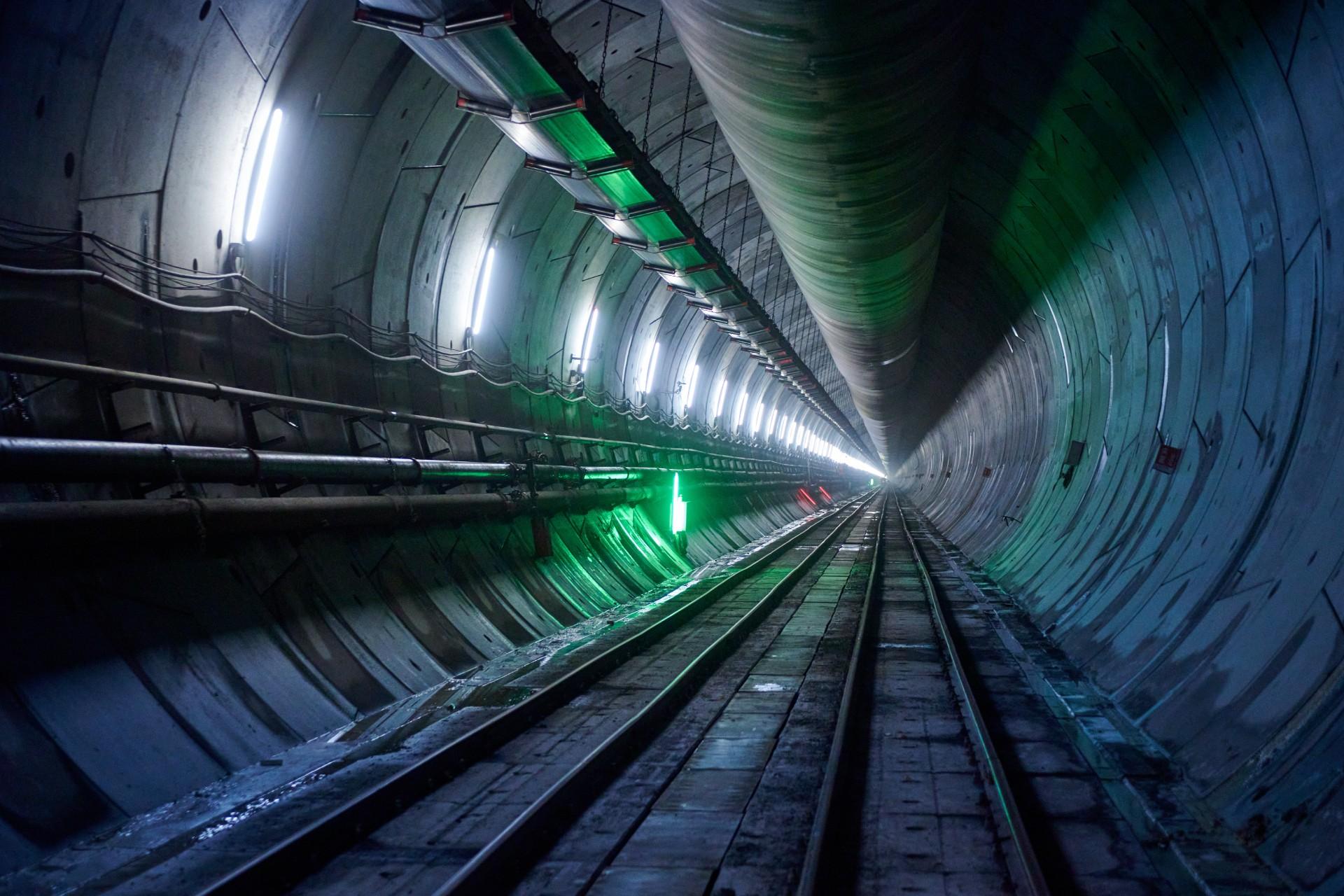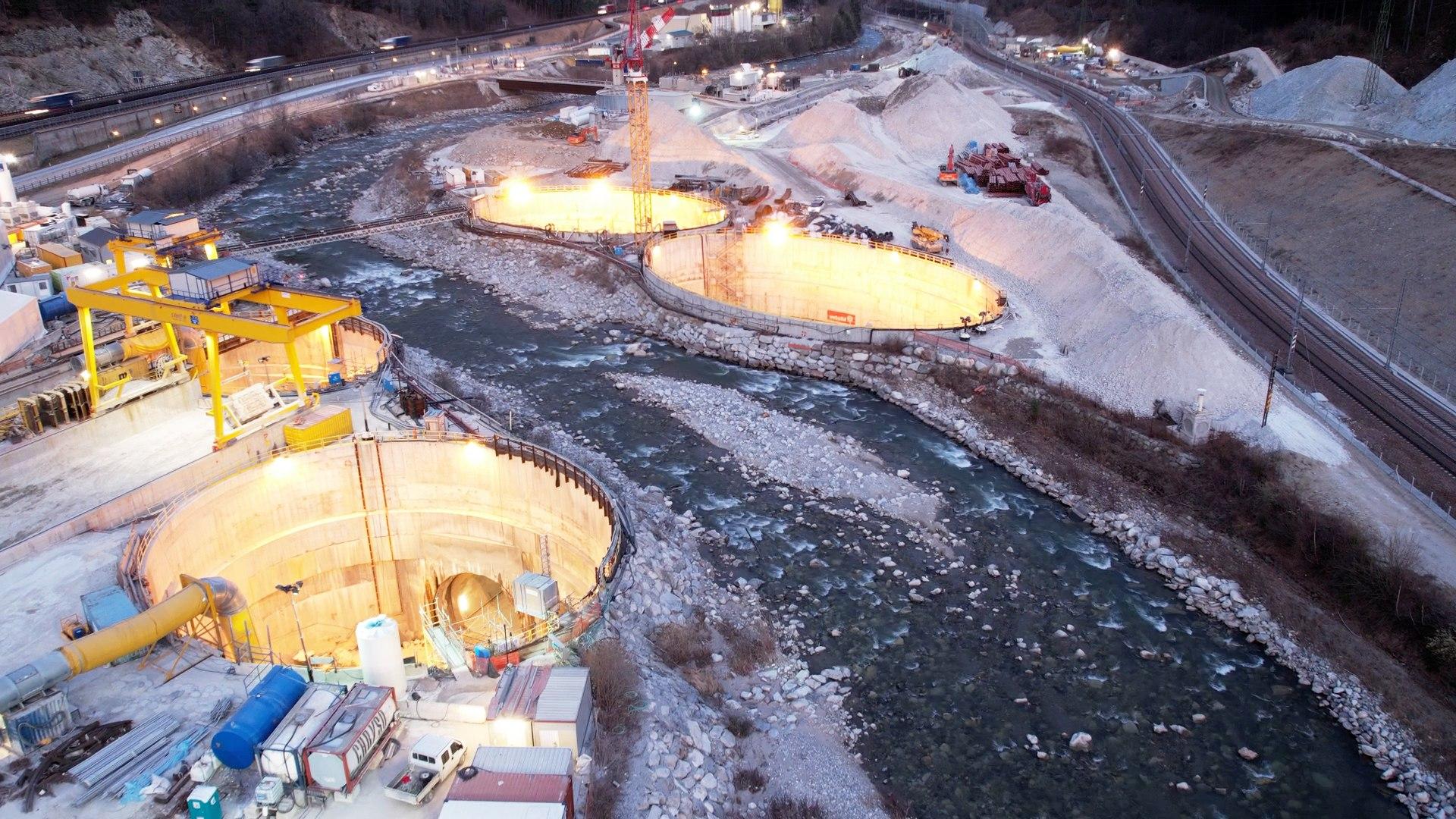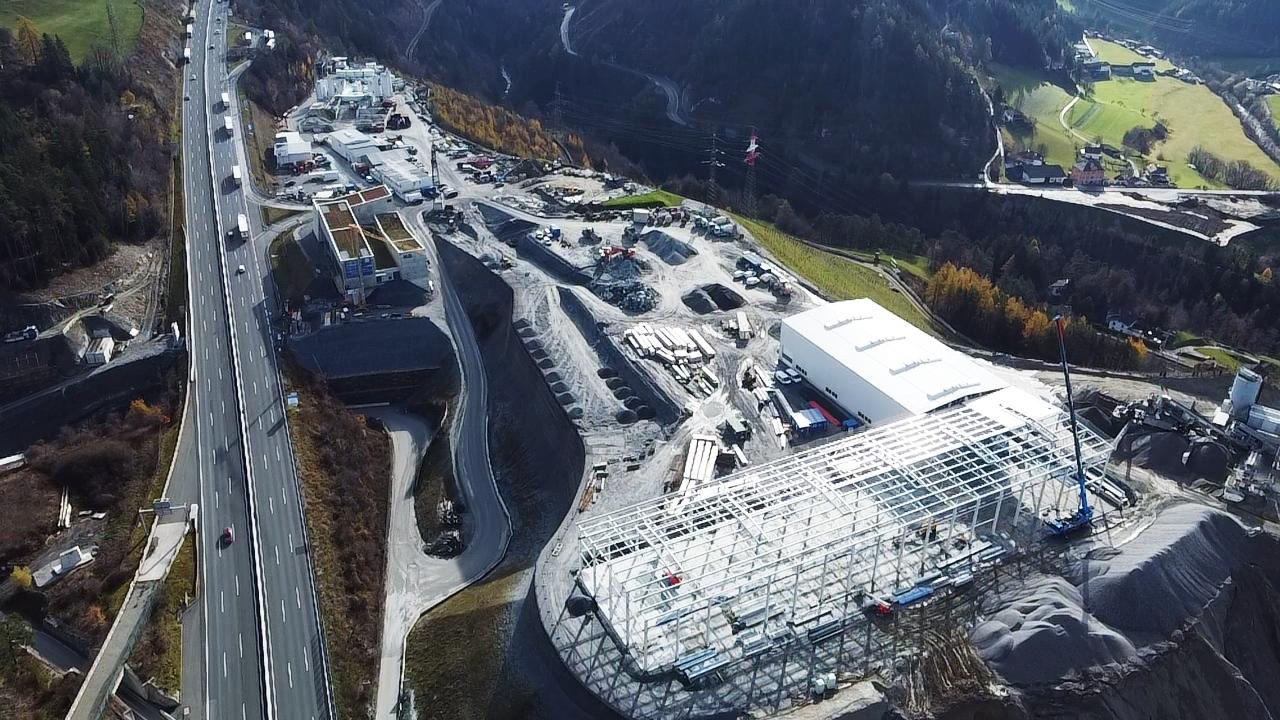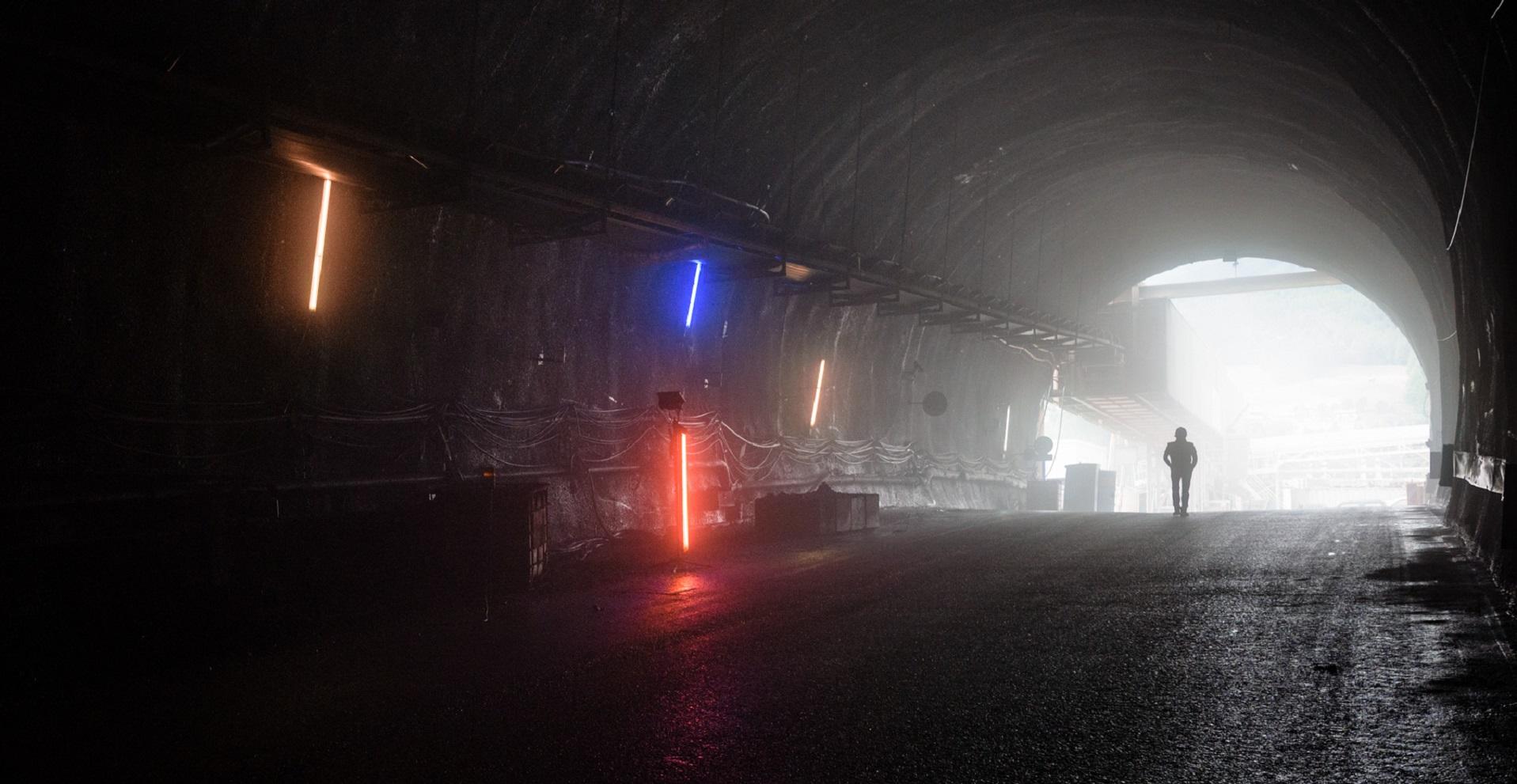Building tomorrow
Brenner Base Tunnel: the world's longest railway tunnel
A strategic infrastructure project for increasingly integrated and sustainable mobility in Europe
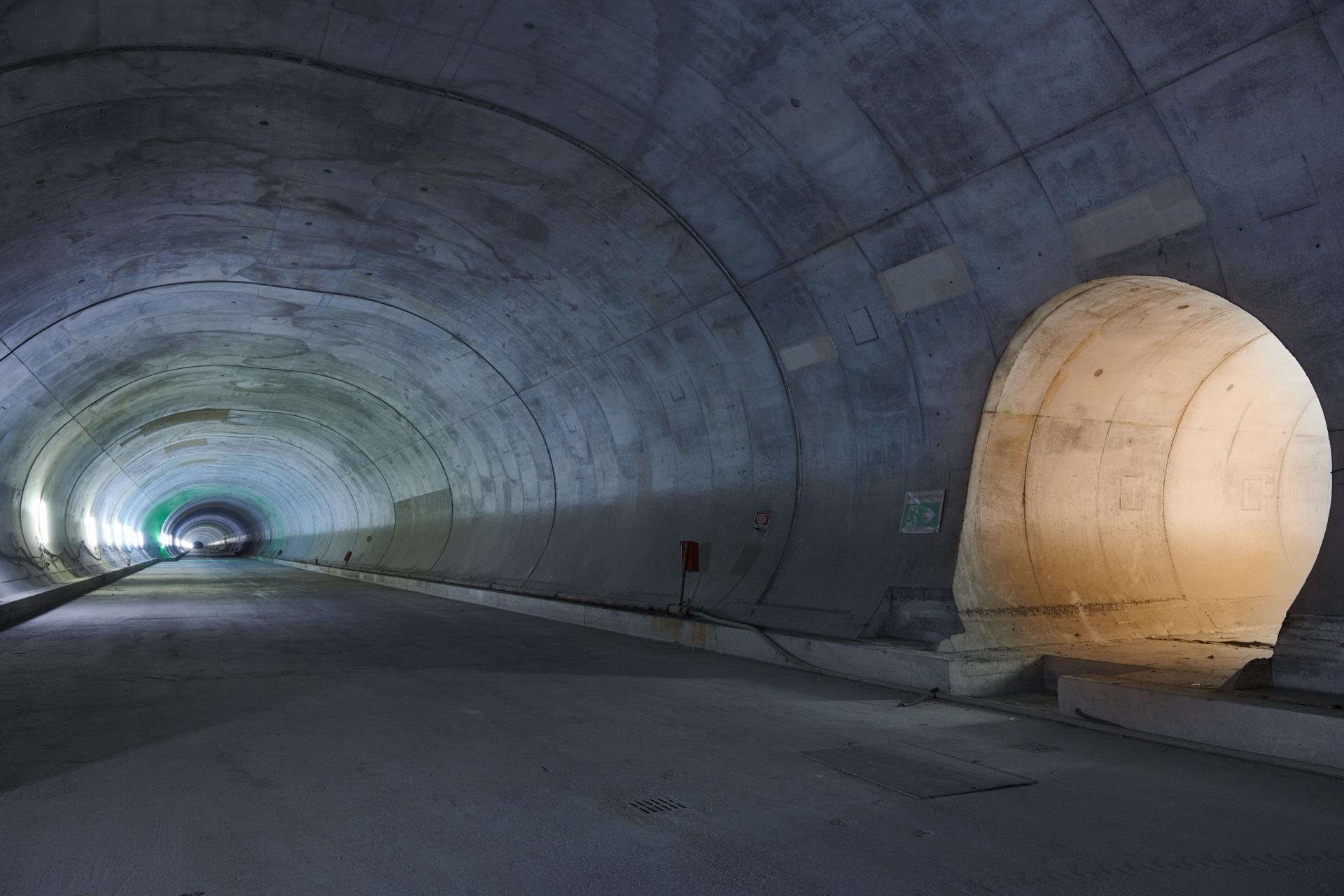
Webuild at work on four lots to build the Brenner Base Tunnel, the mega sustainable project that will connect Italy to Austria, through the Alps
The Brenner Base Tunnel is a mega railway project. It is strategic for sustainable mobility in Italy and has a strong European dimension. The work, in fact, plays a fundamental role for the transnational HS/HC connection between Italy and Austria. These two countries will be, in fact, connected through the Alps. It is also the central element of the SCAN-MED corridor - the backbone of the TEN-T transport system - which will link Helsinki (Finland) to Valletta (on the island of Malta).
Once completed, the work will also be the world's longest railway tunnel. It will allow connecting Fortezza to Innsbruck, along a 64km route, also reducing current travel times by 69%: from 80 to 25 minutes.
Webuild is currently one of the main players in the construction of the Brenner Base Tunnel. The Group is, in fact, engaged in building several lots: the Mules 2-3 lot, and the lots called Underpass Isarco and Gola del Sill-Pfons. It has already built the Tulfes-Pfons lot, on the Austrian side.
The total value of the three projects, on which it is currently working, is approximately €2 billion. Works are carried out in a grouping of companies, by Webuild, using about 1,600 workers and a supply chain of over 1,000 direct suppliers, only for the Isarco Underpass, and the Mules 2-3 lots.
Overview lotti Galleria di Base del Brennero 2021_Webuild_ENG
Brenner Base Tunnel, Milestone Moments
Galleria di Base del Brennero: il tunnel ferroviario più lungo al mondo - Geopop/Webuild
Innovation in the construction sites of the Brenner Base Tunnel: The excavation of the Under-crossing of the Isarco River
The tunnel is the central element of the new railway line. It will, in fact, significantly reduce motorway congestion on the Brenner Pass. This complex work involves building a system of tunnels that extend for 230 kilometres. In the Isarco valley, it is living one of its greatest challenges with the Isarco River Underpass lot: 5 meters under the riverbed, the men are working to freeze the ground, to continue the excavations, also avoiding the displacement of the river from its natural course.
Ground freezing is a complex technique that the Webuild Group, among the first in the world, applies in the construction of complex infrastructures. A team of 70 people is led by Antonio Celot, in the Webuild Group since 1996. Today, he is responsible for freezing major works. "I remember the first winters at minus 17 degrees - said Mr Celot - with staff who had to work outside to make the first foundations, digging the wells from which the tunnels would begin. It was really hard work from a physical point of view ".
The freezing technique is essential to stabilize the soil in the presence of water and start excavations. "In theory, the technique is simple - explained Mr Celot - freezing the water found in the ground to make excavations more stable and with without water, while also creating the tunnel only three metres under an Alpine river. Firstly, the freezing probes are made on the perimeter of the future excavation. We subsequently inject nitrogen into them to create an impermeable ice wall around the tunnel to make the excavation safe, which will then be carried out within the ice. The nitrogen injection continues until the minimum thickness of one meter is reached, at which point we are sure that the soil has the characteristics suitable for the excavation phase ". During the freezing procedure, liquid nitrogen is pumped to -196 degrees centigrade to cool the soil very quickly. Once this operation is completed, the excavation phase begins, but the work of the technicians is not finished yet. Excavations can take weeks, so it is necessary to constantly monitor soil temperatures, while maintaining the ice shell. This is done by circulating a particular brine at -35 degrees in the freezer probes. constantly maintaining target temperatures.
"For each freezing - Mr Celot also added - we have about 3840 temperature data to be checked at the same time: a control that we carry out through software capable of returning temperature trend graphs and alerts on any critical issues, in real time, also allowing us to intervene promptly, and correct any anomalies, while restoring the correct temperatures». Freezing is an innovative technique, with a low environmental impact, but complex management.
The presence of nitrogen in the air could become excessive, and therefore lower the oxygen level below 19%, the minimum threshold for worker safety. Nitrogen is a colorless, odorless gas: two characteristics that make it very risky. This explains why all technicians working on freezing activities have a personal oxygen meter that triggers an alarm if it falls below the warning levels. At the same time, however, it is a sustainable technique, since nitrogen - one of the poorest and most common gases - is extracted from the air. Once produced, the gas is transported to the construction site on board special tanks, where the internal pressure ensures that it remains in a liquid state. When it is time to insert it into the ground, the tank taps are opened through an electronically controlled software. And nitrogen, pumped into the ground, immediately returns to gas, freezing it. One step at a time, men and vehicles advance, excavating these tunnels, heading towards the final goal: to bring into operation a line that will reach a total length of 64 kilometres, making it the world’s longest underground railway connection.
Galleria di Base del Brennero, Sottoattraversamento fiume Isarco - operazioni di congelamento

“We are contributing to the construction of one of the most challenging sustainable and engineering projects in the world”
